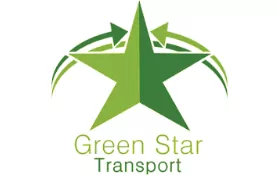In this blog we will be looking at the role of the Health and Safety Executive (HSE) inspector and the actions which may be taken against businesses should a breach in health and safety legislation be found.
Why would a HSE visit me and my business?
The HSE and local authorities have a share responsibility for regulating health, safety and welfare for those at work and for those affected by work activity, including the public.
Sometimes the HSE or Local Authority will come and visit businesses, but how do you know if they will turn up on your doorstep? These visits are based on risk, they look at workplaces where the risks are likely to be highest and where it will have the greatest impact. So far example if a business or sector has a poor health and safety performance or has a high rate of accidents or ill health, the HSE may decide to visit.
They may want to investigate a specific accident, incident, work related illness or complaint. They won’t visit every single one of these as like all business time and resources are a factor. They will however concentrate their efforts here on the most severe incidents such as those resulting in deaths or major injuries or where there a possibility of this.
Your business may operate in a hazardous industry (for example, offshore, nuclear, rail, some chemicals, and explosives). Most of these industries operate under a safety case or licensing regime or you may be classed as a Control of Major Hazards (COMAH) site. In these cases, this requires the business to have a good relationship with their dedicated HSE inspector. These businesses will have routine and planned inspections too enable you identify and controlled the hazards within your business.
HSE and local authority staff also carry out a limited number of visits to:
- Make an assessment of the risks in new businesses or premises
- Target certain geographical areas or sectors usually to concentrate on specific priorities such as bad backs or workplace transport
- Do random ‘spot checks’ on compliance
- Keep abreast of new developments and processes or for training purposes
If an inspector arrives at your business due to an accident, incident or failure in a safe system of work they will investigate to find out what went wrong and to learn the lessons both for your business and for others that do similar type of work. They will check the standards of health, safety and welfare in your business and give advice on how to prevent people being made ill or injured at work. They will want to establish that you are taking sensible actions to reduce your health and safety risks.
Fee for Intervention.
Since 2012, the HSE has been charging businesses that are in breach of health and safety regulations under the Fee For Intervention (FFI) programme. Any action that is taken by the HSE inspector in writing, e.g. anything above verbal advice, now results in a fee.
FFI is a fine no business wants to receive. Every year, the Health and Safety Executive make millions of pounds from it, it currently costs £154 an hour (January 2020). The fee will include the costs covering the time of the entire original visit. The total amount recovered will be based on the amount of time it takes HSE to identify the breach and help you put things right multiplied by the hourly rate. HSE will send you an invoice every two months as the fees mount up. You’re then expected to pay the invoice within 30 days of receiving it. If no material breach is found, no fee is charged – it’s as simple as that.
So to put it simply, it’s a fine that’s handed to businesses when an HSE inspector finds what they consider to be a ‘material breach’ of Health & Safety regulations.
A material breach is a contravention of Health & Safety law an HSE inspector finds serious enough to formally write to your business about, demanding action be taken. A material breach will fall under one of four categories:
Health risks – such as failing to provide Personal Protective Equipment (PPE) to employees with asthma or not protecting employees from excessive noise with suitable personal hearing protection.
Safety risks – such as failing to maintain lifting equipment or failing to define and manage traffic routes.
Welfare breaches – such as failing to provide an adequate supply of drinking water.
Management of Health & Safety risks – such as failing to consider the implications of new processes or not effectively managing contractors on-site.
What action could they take?
The inspector may take action if they find you’re breaking the law during the visit. They may also tell you to stop a dangerous activity in your workplace immediately. After the inspector has finished looking round your workplace, they may: offer advice; give you a notification of contravention; give you an improvement notice; give you a prohibition notice; or prosecute you for breaching health and safety laws.
How is the FFI charged?
The FFI fee is charged from the second an inspector finds a breach and the costs are designed to cover time spent: Inspecting your site, writing up and sending letters and reports, following up any work that comes off the back of their visit – like return visits and serving notices. Taking statements, seeking assistance from the Health and Safety Laboratory (HSL) or other third parties, gathering information and evidence. Assessing and recording the findings gathered from their inspection, investigation and enforcement decisions and reviewing investigations to make sure appropriate action has been taken.
Notices and prosecutions
In 2018/19 there were 7291 Prohibition notices issued and 3742 improvement notices issued.
What is the cost of getting it wrong?
During 2018/19 there was 394 cases prosecuted by HSE and, in Scotland, the Crown Office and Procurator Fiscal Service (COPFS). Out of those 394 cases 364 had a conviction secured,this is a conviction rate of 92%. There was £54.5 million in fines issued to duty holders found guilty of health and safety offences in 2018/19, that’s a lot of money! The single largest fine was £3 million and a total of 36 cases received fines of £500,000 or more.
There were 44 HSE prosecutions which resulted in custodial sentences or community service orders. [source HSE statistics]
How can Kedleston Safety help?
Kedleston Safety offers a tailored health and safety solution through a dedicated consultant who gets to know your business and how you operate. This service includes face to face visits to advise on compliance with current regulations and provide further assistance if required. If you have any questions about FFI, or would like to know how Kedleston Safety can help you manage your health and safety, please contact the Kedleston Safety team on hello@kedlestonsafety.co.uk or call 01332 220606
In this blog we will be looking at the role of the Health and Safety Executive (HSE) inspector and the actions which may be taken against businesses should a breach in health and safety legislation be found.
Why would a HSE visit me and my business?
The HSE and local authorities have a share responsibility for regulating health, safety and welfare for those at work and for those affected by work activity, including the public.
Sometimes the HSE or Local Authority will come and visit businesses, but how do you know if they will turn up on your doorstep? These visits are based on risk, they look at workplaces where the risks are likely to be highest and where it will have the greatest impact. So far example if a business or sector has a poor health and safety performance or has a high rate of accidents or ill health, the HSE may decide to visit.
They may want to investigate a specific accident, incident, work related illness or complaint. They won’t visit every single one of these as like all business time and resources are a factor. They will however concentrate their efforts here on the most severe incidents such as those resulting in deaths or major injuries or where there a possibility of this.
Your business may operate in a hazardous industry (for example, offshore, nuclear, rail, some chemicals, and explosives). Most of these industries operate under a safety case or licensing regime or you may be classed as a Control of Major Hazards (COMAH) site. In these cases, this requires the business to have a good relationship with their dedicated HSE inspector. These businesses will have routine and planned inspections too enable you identify and controlled the hazards within your business.
HSE and local authority staff also carry out a limited number of visits to:
- Make an assessment of the risks in new businesses or premises
- Target certain geographical areas or sectors usually to concentrate on specific priorities such as bad backs or workplace transport
- Do random ‘spot checks’ on compliance
- Keep abreast of new developments and processes or for training purposes
If an inspector arrives at your business due to an accident, incident or failure in a safe system of work they will investigate to find out what went wrong and to learn the lessons both for your business and for others that do similar type of work. They will check the standards of health, safety and welfare in your business and give advice on how to prevent people being made ill or injured at work. They will want to establish that you are taking sensible actions to reduce your health and safety risks.
Fee for Intervention.
Since 2012, the HSE has been charging businesses that are in breach of health and safety regulations under the Fee For Intervention (FFI) programme. Any action that is taken by the HSE inspector in writing, e.g. anything above verbal advice, now results in a fee.
FFI is a fine no business wants to receive. Every year, the Health and Safety Executive make millions of pounds from it, it currently costs £154 an hour (January 2020). The fee will include the costs covering the time of the entire original visit. The total amount recovered will be based on the amount of time it takes HSE to identify the breach and help you put things right multiplied by the hourly rate. HSE will send you an invoice every two months as the fees mount up. You’re then expected to pay the invoice within 30 days of receiving it. If no material breach is found, no fee is charged – it’s as simple as that.
So to put it simply, it’s a fine that’s handed to businesses when an HSE inspector finds what they consider to be a ‘material breach’ of Health & Safety regulations.
A material breach is a contravention of Health & Safety law an HSE inspector finds serious enough to formally write to your business about, demanding action be taken. A material breach will fall under one of four categories:
Health risks – such as failing to provide Personal Protective Equipment (PPE) to employees with asthma or not protecting employees from excessive noise with suitable personal hearing protection.
Safety risks – such as failing to maintain lifting equipment or failing to define and manage traffic routes.
Welfare breaches – such as failing to provide an adequate supply of drinking water.
Management of Health & Safety risks – such as failing to consider the implications of new processes or not effectively managing contractors on-site.
What action could they take?
The inspector may take action if they find you’re breaking the law during the visit. They may also tell you to stop a dangerous activity in your workplace immediately. After the inspector has finished looking round your workplace, they may: offer advice; give you a notification of contravention; give you an improvement notice; give you a prohibition notice; or prosecute you for breaching health and safety laws.
How is the FFI charged?
The FFI fee is charged from the second an inspector finds a breach and the costs are designed to cover time spent: Inspecting your site, writing up and sending letters and reports, following up any work that comes off the back of their visit – like return visits and serving notices. Taking statements, seeking assistance from the Health and Safety Laboratory (HSL) or other third parties, gathering information and evidence. Assessing and recording the findings gathered from their inspection, investigation and enforcement decisions and reviewing investigations to make sure appropriate action has been taken.
Notices and prosecutions
In 2018/19 there were 7291 Prohibition notices issued and 3742 improvement notices issued.
What is the cost of getting it wrong?
During 2018/19 there was 394 cases prosecuted by HSE and, in Scotland, the Crown Office and Procurator Fiscal Service (COPFS). Out of those 394 cases 364 had a conviction secured,this is a conviction rate of 92%. There was £54.5 million in fines issued to duty holders found guilty of health and safety offences in 2018/19, that’s a lot of money! The single largest fine was £3 million and a total of 36 cases received fines of £500,000 or more.
There were 44 HSE prosecutions which resulted in custodial sentences or community service orders. [source HSE statistics]
How can Kedleston Safety help?
Kedleston Safety offers a tailored health and safety solution through a dedicated consultant who gets to know your business and how you operate. This service includes face to face visits to advise on compliance with current regulations and provide further assistance if required. If you have any questions about FFI, or would like to know how Kedleston Safety can help you manage your health and safety, please contact the Kedleston Safety team on hello@kedlestonsafety.co.uk or call 01332 220606




